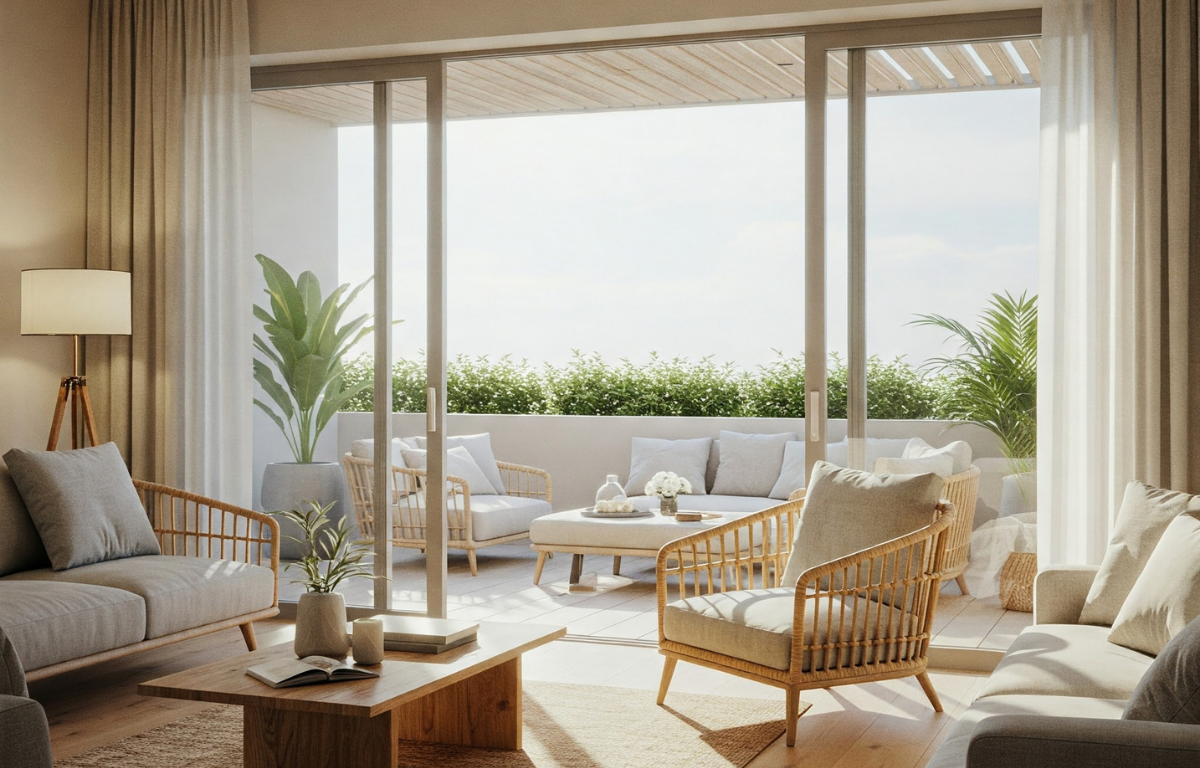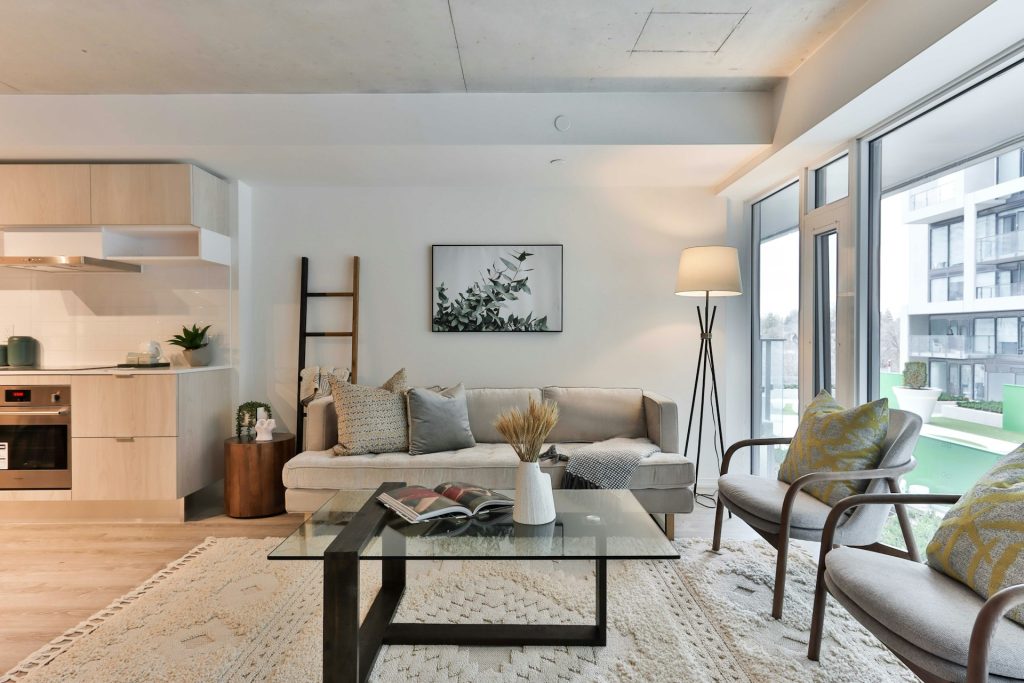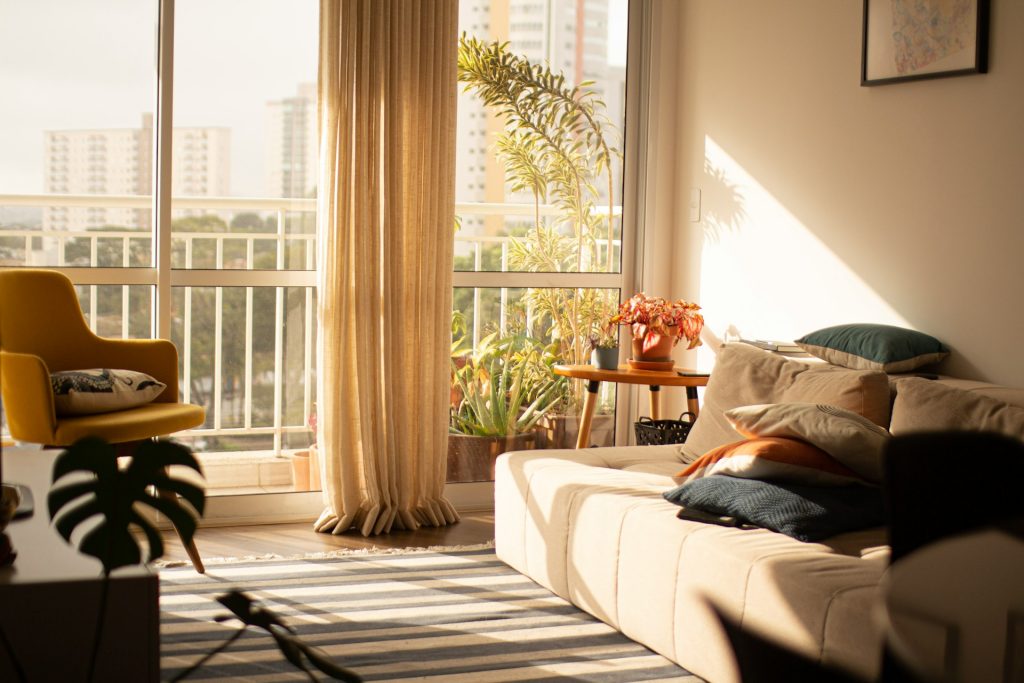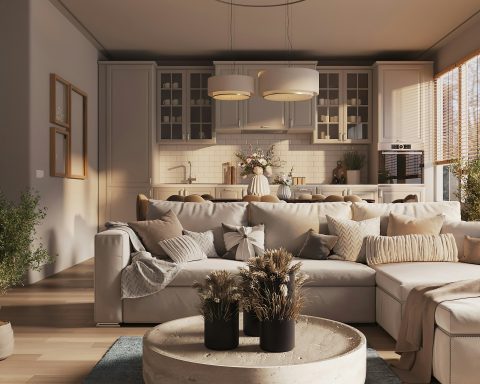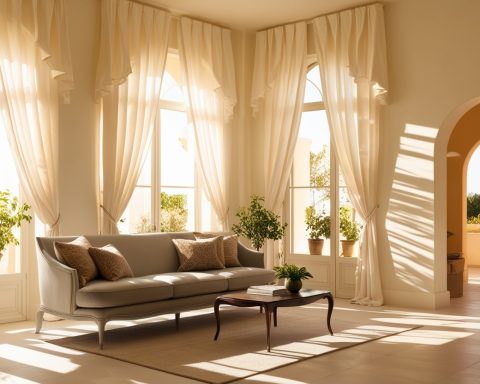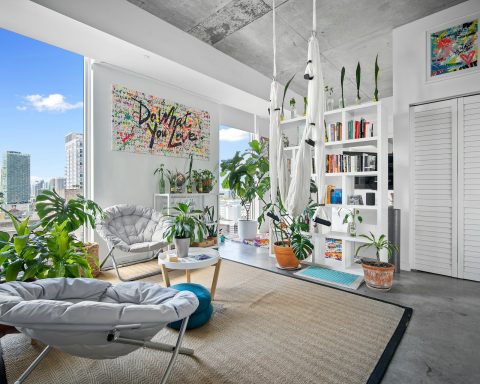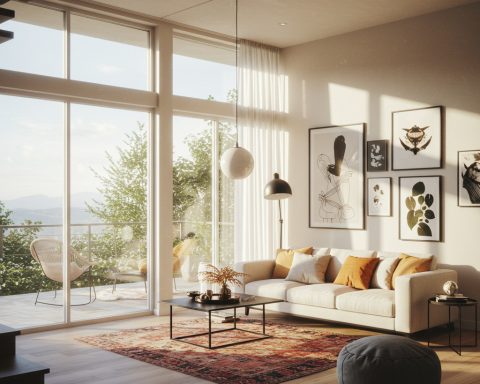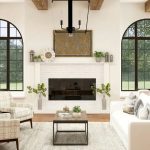In recent years, the desire to blur the lines between indoor and outdoor living has become increasingly prevalent. This trend reflects a growing appreciation for nature and a desire to create spaces that feel connected to the natural world. By seamlessly integrating indoor and outdoor spaces, you can enhance the flow and functionality of your home while creating a more relaxed and inviting atmosphere.
1. The Foundation: Visual Continuity
The key to creating a seamless transition between indoor and outdoor spaces lies in establishing visual continuity. This can be achieved through:
- Color Palette: Maintaining a consistent color palette throughout the indoor and outdoor spaces.
- Material Continuity: Using similar materials, such as natural wood, stone, or metal, both indoors and out.
- Consistent Flooring: Extending indoor flooring materials, such as tile or hardwood, onto the patio or deck.
2. Furniture Flow: Creating a Seamless Transition
Furniture can be used to bridge the gap between indoor and outdoor spaces. Consider:
- Indoor-Outdoor Furniture: Opt for furniture pieces that can be easily moved between indoors and outdoors.
- Matching Styles: Choose furniture with a similar style and aesthetic for both indoor and outdoor spaces.
- Creating Conversation Areas: Position furniture to create conversation areas that flow seamlessly from indoors to outdoors.
3. The Power of Plants: Connecting with Nature
Plants play a vital role in creating a seamless indoor-outdoor living experience. Consider:
- Indoor-Outdoor Plants: Use large potted plants to visually connect the two spaces.
- Greenery on Both Sides: Incorporate plants and greenery both indoors and outdoors.
- Vertical Gardens: Create living walls or vertical gardens to add a touch of nature to both spaces.
4. Lighting the Way: Illuminating Both Spaces
Lighting can enhance the connection between indoor and outdoor spaces. Consider:
- Ambient Lighting: Use soft, ambient lighting both indoors and outdoors to create a warm and inviting atmosphere.
- String Lights: String lights can add a magical touch to both indoor and outdoor spaces.
- Lanterns: Lanterns can be used to create a warm and inviting ambiance on the patio or deck.
5. Views and Sightlines: Maximizing Connections
Strategic placement of windows and doors can maximize the visual connection between indoor and outdoor spaces. Consider:
- Large Windows: Use large windows and sliding glass doors to create expansive views.
- Window Placement: Position windows to frame views of the outdoors.
- Open Floor Plans: Create open floor plans that allow for unobstructed views of the outdoor space.
6. Flooring and Texture: Creating a Unified Feel
The choice of flooring can significantly impact the flow between indoor and outdoor spaces. Consider:
- Natural Stone: Use natural stone flooring, such as travertine or slate, both indoors and outdoors.
- Wood Flooring: Extend hardwood flooring from the interior to the exterior covered patio.
- Outdoor Carpets: Use outdoor rugs to define spaces and add texture.
7. Water Features: Adding a Sense of Tranquility
Water features can add a sense of tranquility and relaxation to both indoor and outdoor spaces. Consider:
- Fountains: Incorporate small fountains or water features both indoors and outdoors.
- Ponds: If space allows, create a small pond or water feature in the outdoor space.
- The Sound of Water: Use sound of water features to create a relaxing ambiance.
8. Creating a Seamless Transition: The Role of Materials
The choice of materials can significantly impact the flow between indoor and outdoor spaces. Consider:
- Natural Materials: Use natural materials such as wood, stone, and natural fibers throughout both spaces.
- Metal Accents: Incorporate metal accents, such as stainless steel or wrought iron, for a cohesive look.
- Neutral Color Palette: Use a neutral color palette to create a sense of harmony between the two spaces.
9. The Importance of Scale and Proportion:
Ensure that the scale and proportion of elements are consistent between indoor and outdoor spaces. This creates a sense of balance and harmony.
10. Creating a Cozy Outdoor Living Room
Transform your outdoor space into a cozy extension of your living room. Consider:
- Comfortable Seating: Include comfortable outdoor seating, such as sofas, chairs, and ottomans.
- Outdoor Rugs: Use outdoor rugs to define seating areas and add warmth.
- Outdoor Lighting: Create a warm and inviting atmosphere with outdoor lighting.
- Fire Pit or Fireplace: Incorporate a fire pit or fireplace for warmth and ambiance.
11. The Art of Camouflage: Blending Indoors and Outdoors
Use landscaping and design elements to camouflage the transition between indoor and outdoor spaces. Consider:
- Plants and Greenery: Use plants and greenery to soften the edges between the two spaces.
- Water Features: Incorporate water features that blend seamlessly into the landscape.
- Natural Materials: Use natural materials that mimic the surrounding environment.
12. The Importance of Maintenance:
Regular maintenance is essential for keeping your indoor-outdoor living space looking its best. Consider:
- Cleaning and Upkeep: Regularly clean and maintain outdoor furniture and surfaces.
- Plant Care: Regularly water and prune plants both indoors and outdoors.
- Seasonal Updates: Update your outdoor space for different seasons.
13. Creating a Sense of Sanctuary:
Ultimately, the goal is to create a seamless indoor-outdoor living space that feels like a sanctuary. A place where you can relax, unwind, and connect with nature.
By carefully considering these elements, you can create a seamless and inviting transition between your indoor and outdoor spaces, transforming your home into a true haven of relaxation and enjoyment.
14. The Role of Architectural Elements:
Architectural features can significantly enhance the seamless flow between indoor and outdoor spaces. Consider:
- Oversized Sliding Doors: Large glass doors that fully retract create an unobstructed opening, effectively merging the two areas.
- Bifold Doors: These doors fold away completely, offering a wide-open connection to the outdoors.
- Consistent Ceiling Heights: Maintaining similar ceiling heights in both indoor and adjacent outdoor covered areas helps create a unified sense of space.
- Transitional Covered Areas: Covered patios or porches act as a natural intermediary zone, easing the transition between the fully enclosed interior and the open exterior.
15. Integrating Outdoor Kitchens and Dining Areas:
Extending your living and entertaining space outdoors with a functional kitchen or dining area further blurs the lines between the two environments. Consider:
- Outdoor Kitchen Islands: Equipped with grills, sinks, and prep areas, these create a natural extension of your indoor kitchen.
- Covered Dining Patios: Provide shade and protection for outdoor meals, making the space more usable throughout the year.
- Built-in Seating: Integrated benches or banquettes offer comfortable outdoor dining options and contribute to a cohesive design.
16. The Subtle Art of Window Treatments:
Window treatments play a crucial role in controlling light and maintaining visual flow. Opt for:
- Minimalist Blinds or Shades: These provide privacy and light control without obstructing the view when open.
- Sheer Curtains: Allow soft, diffused light to filter through while maintaining a visual connection to the outdoors.
- Motorized Screens: Retractable screens can provide shade and insect protection without permanently altering the view.
17. Embracing the Sounds of Nature:
Enhance the sensory connection to the outdoors by allowing natural sounds to permeate your indoor spaces:
- Open Windows and Doors: When weather permits, open windows and doors to invite in the sounds of birdsong or rustling leaves.
- Water Features: The gentle sound of a fountain or pond can create a calming and natural ambiance that can be enjoyed both indoors and out.
- Wind Chimes: Subtly placed wind chimes can add a delicate and natural auditory element.
18. Extending Your Interior Design Style:
Carry your interior design style seamlessly into your outdoor spaces to create a cohesive and unified aesthetic.
- Consistent Furniture Styles: Choose outdoor furniture that complements the style and materials of your indoor furnishings.
- Coordinating Textiles: Use outdoor cushions and throws in colors and patterns that echo your indoor décor.
- Similar Decorative Accents: Incorporate outdoor-friendly versions of your indoor decorative items, such as lanterns or sculptures.
19. The Practicality of Outdoor Heating and Cooling:
To maximize the usability of your outdoor living space throughout the year, consider incorporating:
- Patio Heaters: Extend the enjoyment of your outdoor areas into cooler evenings and seasons.
- Outdoor Fans: Provide a refreshing breeze during warmer months.
- Misting Systems: Offer a cooling effect in hot and dry climates.
20. Creating Defined Pathways:
Clearly defined pathways can enhance the flow and connection between different indoor and outdoor zones. Consider:
- Stepping Stones: Create natural-looking pathways through gardens or lawns leading to outdoor seating areas.
- Paver Walkways: Construct defined walkways connecting patios, decks, and other outdoor features to indoor access points.
- Consistent Paving Materials: Use similar or complementary paving materials for both covered and uncovered outdoor areas.
21. The Illusion of Extended Space with Mirrors:
Strategically placed outdoor mirrors can create the illusion of a larger and more expansive outdoor living area, while also reflecting light and greenery.
- Weather-Resistant Mirrors: Choose mirrors specifically designed for outdoor use.
- Placement to Reflect Greenery: Position mirrors to reflect plants and foliage, visually extending your garden.
- Consider Privacy: Be mindful of what the mirror reflects to avoid compromising privacy.
22. Integrating Smart Home Technology:
Smart home technology can enhance the functionality and convenience of your indoor-outdoor living space:
- Outdoor Lighting Control: Smart lighting systems allow you to easily adjust the ambiance of your outdoor areas.
- Automated Shade and Awning Systems: Control shade and weather protection with the touch of a button.
- Outdoor Sound Systems: Extend your indoor audio experience to your outdoor spaces.
23. The Importance of Durability and Weather Resistance:
When selecting materials and furnishings for your outdoor spaces, prioritize durability and weather resistance to ensure longevity and minimize maintenance.
- Weatherproof Furniture Materials: Choose materials like teak, wicker, aluminum, or powder-coated steel.
- UV-Resistant Fabrics: Select outdoor cushions and upholstery made from UV-resistant and water-repellent fabrics.
- Durable Flooring Options: Opt for outdoor flooring materials that can withstand the elements.
24. Creating a Multi-Sensory Experience:
Engage multiple senses to enhance the connection between your indoor and outdoor environments:
- Fragrant Plants: Incorporate fragrant flowers and herbs near doorways and seating areas.
- Textural Elements: Use a variety of textures in both indoor and outdoor furnishings and landscaping.
- The Taste of the Outdoors: Grow herbs or vegetables in accessible outdoor planters for fresh ingredients.
25. The Ever-Evolving Connection:
Creating a seamless indoor-outdoor living space is an ongoing process. Continuously evaluate and refine your design to ensure it meets your evolving needs and enhances your connection with the natural world.
Conclusion:
In conclusion, crafting a truly seamless indoor-outdoor living space is about more than just opening a door; it’s about a holistic design approach that prioritizes visual continuity, functional flow, and a deep connection with the natural world. By carefully considering elements like color palettes, materials, furniture, lighting, and architectural features, you can effectively blur the boundaries between your interior and exterior environments. This thoughtful integration not only expands your usable living area but also fosters a greater sense of well-being, allowing you to effortlessly embrace the beauty and tranquility of the outdoors from the comfort of your home. Embrace the principles outlined in this guide, and transform your living space into a harmonious sanctuary where the indoors and outdoors coexist in perfect equilibrium.
